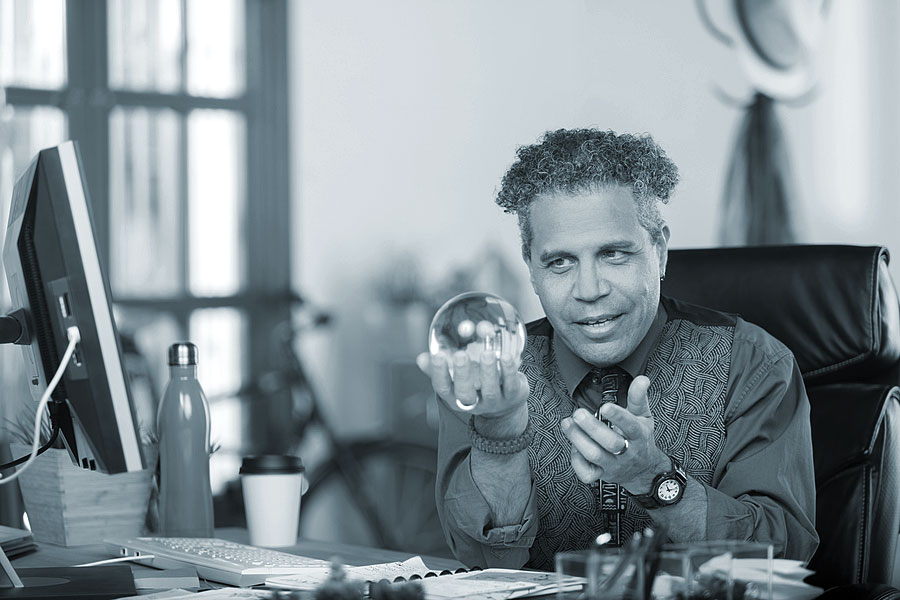
and Creative Wizards Without Crimping Their Style
In a world where manual work and simple intellectual pursuits are increasingly being dominated by robots and AI, creative work is becoming all the more important. From artists creating pieces of history to ad agencies crafting rocking marketing campaigns and innovative disrupters working in a wide range of industries, creative work is increasingly vital. However, managing creative workflows can be immensely difficult.
On one hand, you don’t want to crimp your creatives’ style. Creative folks can be scattered brained, resistant to structure, and tend to work in starts and stops, among other things. These aren’t negative attributes, they are vital components of what makes a creative type creative. However, the unique attributes of creative types make project management more of a challenge.
Add in the, often, chaotic aspects of the creative process itself, such as brainstorming, and managing projects and workflows become further difficult. Here’s how to more effectively manage your creative workflows.
Some Basic Ground Rules for Creative Workflow Management
Understand What a Workflow Is
The first step to managing workflows is to understand what a workflow is. First, a workflow does not have to be a rigid, inflexible, and constraining structure. When it comes to creative work, such structures are often detrimental to both employees and output.
However, a workflow will contain some process standards, SOPs, and other “normalized” factors. Instead of seeing these factors as constraining, you should think of them as lighthouses. They show the way and help people reach their milestones, both during bright blue skies and in the mid of chaotic storms.
Make sure this process is documented and that the team understands it. Make sure the documentation is easy to access and remind people of the importance of the workflow process.
Know Why You Need to Manage Your Workflows
Don’t workflow issues just sort of work themselves out? Can’t you just unleash your creativity and hope things work out for the best? Yes and no. Yes, you should unleash your creative potential, but no you shouldn’t just hope things work themselves out. A bit of workflow management can go a long way towards keeping everyone and everything on track.
Who has to accomplish what and what is due when. What’s needed before so-and-so can accomplish such-and-such are all issues you need to stay in front of and great workflow management makes these issues all but mute. Poor management will turn them into major headaches.
Acknowledge and Address Problems
It doesn’t matter how good your creative workflow process is and how amazing your team performs, there will be problems. A project won’t be completed on time, an asset won’t turn out as good as hoped, the list of potential problems is near endless. You can’t ignore these problems, but you shouldn’t let them haunt you either.
Challenges are a fact of life. What’s important is adjusting to the problems. See if you can identify the root causes or provide support to overwhelmed workers. Adjust the team, the workflow, and your management projects. However, don’t panic, don’t get stressed, stay calm and carry on.
A Journey Towards the Perfect Workflow
Can perfection ever be achieved? Probably not, however, sometimes the journey is more important than the destination. This could certainly be said of the workflow management process. You will likely never perfect it. Even if you secure perfection with given tools and circumstances, changing conditions will provide opportunities to improve the workflow.
Regardless, the process of building towards a perfect workflow will lead to an improved process even if not a perfect one. You’ll still enjoy results and increased output. What’s important to understand is that workflow optimization is a process, something you have to frequently tinker with.
Setting Up the Creative Workflow
First, your workflow must be managed. Having a project manager, or a number of project managers, will help. In general, it’s best to keep the project management staff lean. Once you have your project managers in place, it’s time to craft the workflow. There are no cure-all solutions, however, the following steps are often effective.
There are no cure-all solutions for the perfect workflow, however, there are some important steps to consider. Click To TweetEstablish Benchmarks and KPI
Measurables help tremendously. Your team should not be enslaved to measurables and should always keep an eye on the bigger prizes. Regardless, having benchmarks and KPIs in place will help your team stay focused on and progress towards achievements.
Consider the following measurables:
– Completed documents, assets, and materials.
– Number of different versions per proof.
– Time from start to approval.
– Length and stages of project lifecycle.
Set Up a Job Request
Before a job is started, a request must be made. Your staff needs to know what to do, who they are doing it for, and other key aspects. That’s why it’s important to develop a formal job request process. Make sure you adhere to it and don’t allow the team to cut corners.
Start with intuitive, simple request forms that are tailored to projects and clients (when necessary). These forms will be the center of your “request” efforts and will set the appropriate expectations for clients and workers.
Managing the Actual Project
So now it’s time to get to managing. It’s important throughout the process to get task updates and proof of completed work. These simple updates will help you stay on task and be informed. However, remember that you can’t always take everyone’s word. Sometimes, team members will fall behind and not admit to it. It’s important to cultivate a workplace culture that is supportive.
Other Steps:
– Consider project management software, it can be a godsend, streamlining many processes.
– Use a deadline calendar to make sure projects are being completed on time. When a project is falling behind, consider extra resources to get it up to speed.
Concluding with On-Point Reviewing and Approving
Once work is completed, it has to be reviewed, and not just with your team, but also with the clients. By proactively communicating review expectations and reducing conflicting feedback, you can optimize the review process itself.
Sometimes, that means training your clients to be good reviewers. Teach them how to review and how to get the most out of the reviews. What’s important is working together. The review and approval process can be a collaborative process where both parties share their needs, insights, and capabilities.















